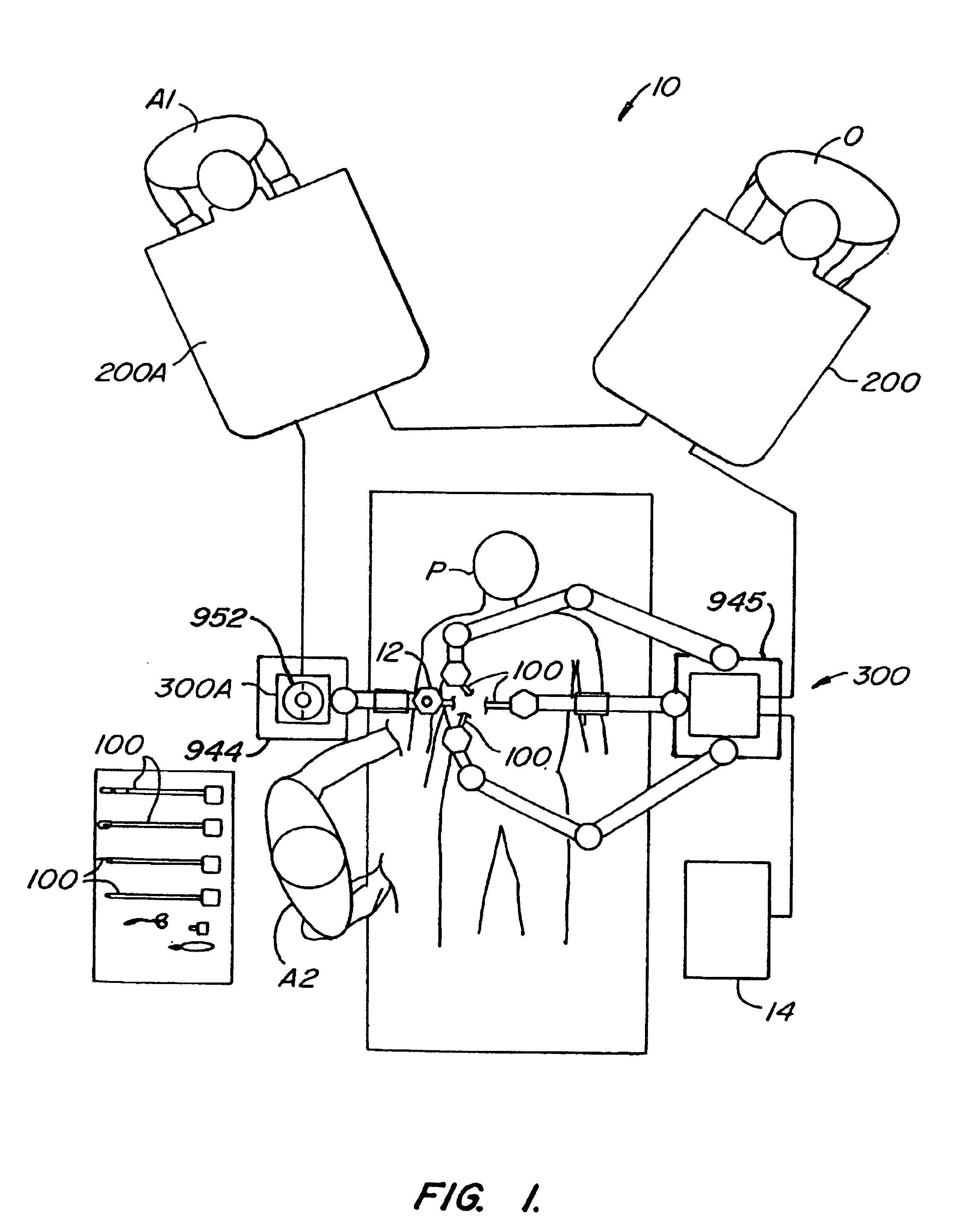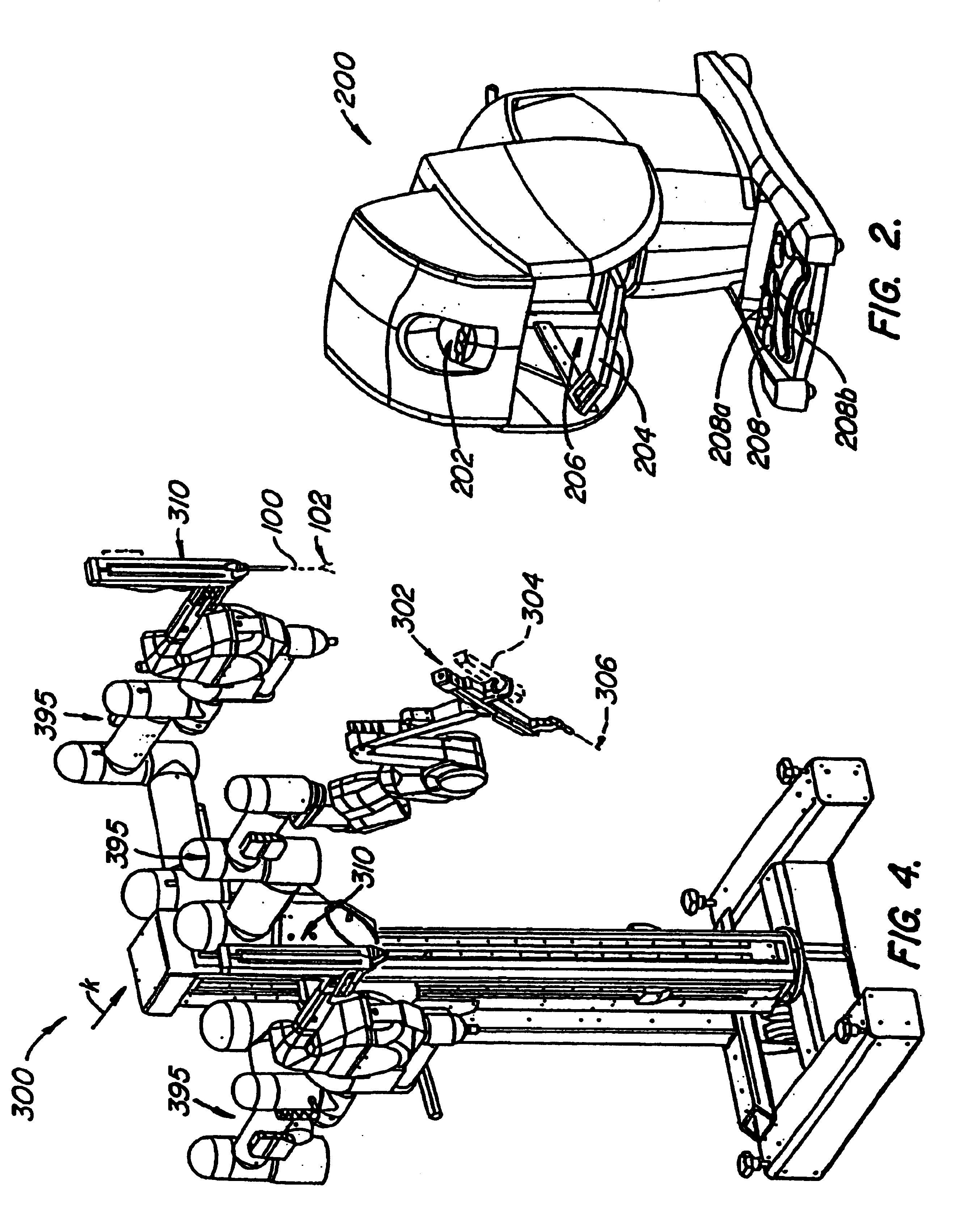Arm cart for telerobotic surgical system
a robotic system and telerobotic technology, applied in the field of medical devices, systems and methods, can solve the problems of reducing the cost of hospital residency, reducing the cost of hospitalization, and reducing the cost of hospitalization, and achieve the effect of clear access to the patien
- Summary
- Abstract
- Description
- Claims
- Application Information
AI Technical Summary
Benefits of technology
Problems solved by technology
Method used
Image
Examples
Embodiment Construction
This application is related to the following patents and patent applications, the full disclosures of which are incorporated herein by reference: PCT International Application No. PCT / US98 / 19508, entitled “Robotic Apparatus”, filed on Sep. 18, 1998 (Attorney Docket No. 17516-005510PC), U.S. Patent Application Serial No. 60 / 111,713, entitled “Surgical Robotic Tools, Data Architecture, and Use” (Attorney Docket No. 17516-003200), filed on Dec. 8, 1998; U.S. Patent Application Serial No. 60 / 111,711, entitled “Image Shifting for a Telerobotic System” (Attorney Docket No. 17516-002700), filed on Dec. 8, 1998; U.S. Patent Application Serial No. 60 / 111,714, entitled “Stereo Viewer System for Use in Telerobotic System” (Attorney Docket No. 17516-001500), filed on Dec. 8, 1998; U.S. Patent Application Serial No. 60 / 111,710, entitled “Master Having Redundant Degrees of Freedom” (Attorney Docket No. 17516-001400), filed on Dec. 8, 1998, U.S. Patent Application No. 60 / 116,891, entitled “Dynamic...
PUM
 Login to View More
Login to View More Abstract
Description
Claims
Application Information
 Login to View More
Login to View More - R&D
- Intellectual Property
- Life Sciences
- Materials
- Tech Scout
- Unparalleled Data Quality
- Higher Quality Content
- 60% Fewer Hallucinations
Browse by: Latest US Patents, China's latest patents, Technical Efficacy Thesaurus, Application Domain, Technology Topic, Popular Technical Reports.
© 2025 PatSnap. All rights reserved.Legal|Privacy policy|Modern Slavery Act Transparency Statement|Sitemap|About US| Contact US: help@patsnap.com



